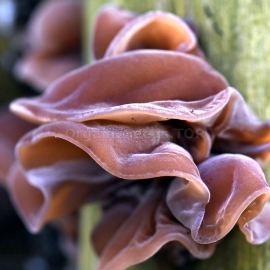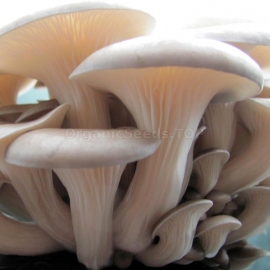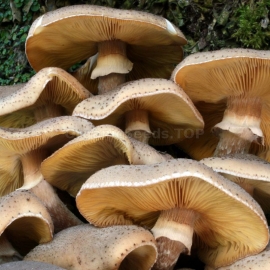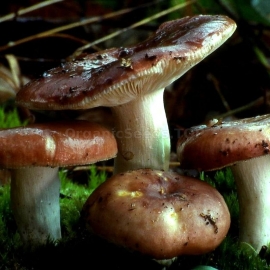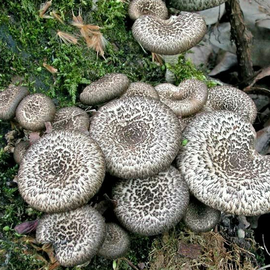 EXCLUSIVE
EXCLUSIVE
«Tiger Pannus» (Panus tigrinus) - Organic Mushroom's Dry Mycelium
6.10 €
Hat: 8-12 cm in diameter, funnel-shaped, with a rolled edge, white, covered with brown or almost black scales. Records: narrow, descending along the stem, whitish or cream.
-
Mycelium of the mushroom «Tiger Pannus» / Panus tigrinus (Lentinus tigrinus)
this is an edible mushroom (be sure to boil for 20-30 minutes before use, drain the broth). Pannus tiger has a unique chemical composition: it contains the polysaccharide lentinan, which has the ability to strengthen the immune system by increasing the production of T-lymphocytes, and also contains substances that inhibit the growth of bacteria and microbes.
The hat is 8-12 cm in diameter, funnel-shaped, with a rolled edge, white, covered with brown or almost black scales. The plates are narrow, descending along the stem, whitish or cream. Leg up to 8 cm long, 0.5-1.5 cm in diameter, dense, off-white, dark brown below. The flesh is white, dense, slightly reddening at the break, without any special smell.
Growing mushrooms on plant residues (intensive method)
Straw or sunflower husks are used as a substrate. Straw and husks must be of good quality, without signs of decay and mold. Before processing, it is desirable to chop the straw, at home it will be enough to chop up to 3-7 cm. Crushing makes the straw compact and more accessible to mycelial enzymes. Substrate preparation. For home conditions, you can use simple pasteurization options, for example, with boiling water. The substrate is poured with water at a temperature of 80-90°C and incubated for 3-4 hours for husks or 7-8 hours for straw. Then the water is drained, and the substrate (straw or husk) must cool to a temperature of 20-30 °C.
Before sowing the mycelium and packing, the humidity of the substrate is approximately determined: if you squeeze the substrate in your hand, then water droplets should appear between your fingers, which corresponds to the optimal substrate moisture content of 70%. When waterlogged, water will drain in trickles. Formation of substrate blocks. Then, a well-cooled and squeezed substrate is mixed with mycelium. Place the finished compost in a transparent plastic bag. Tie up. For air exchange, make several cuts 3–5 cm in size over the entire area of the package. The result is a ready-made mushroom block.
Fruiting:sprouting of mycelium lasts 15 - 18 days at a temperature of 14 - 28 °C. When fruiting, natural and active ventilation is used. Substrate blocks should be illuminated only during fruiting, and in open areas and in rooms with windows, day-night mode is considered normal. In those places where the rudiments of fruiting bodies appeared, cuts of the film are carefully made.
Fruiting takes place in waves of 2-3 weeks, 5-7 days between waves. The first three waves bring the greatest harvest. Productivity is 35-40% of the weight of the substrate. Consumption rate: 2% of mycelium from the total mass of moistened, steamed substrate.
With this product buy
7.10 €
Fruit bodies (4 to 6 cm diameter) with gelatine-like to rubbery texture, and dark brown to black share, depending on the humidity. Little infection of insect larva’s, and a very long storage capacity. Easy to grow.
6.10 €
Isolated from the wild from an ancient woodland in Yorkshire, our unique Summer Oyster Mushroom has a superior flavour and texture that has been inherited from it’s wild origins. An exceptionally nice oyster mushroom to grow and eat.
6.10 €
Armillaria mellea, commonly known as honey fungus, is a basidiomycete fungus in the genus Armillaria. It is a plant pathogen and part of a cryptic species complex of closely related and morphologically similar species.
6.10 €
The Flirt is common and widespread in Britain and Ireland and wherever there are oak or Beech trees on mainland Europe. The gills and stem surface of this brittlegill rapidly turn a deep salmon or rusty-pink when rubbed with iron salts (FeSO4).

